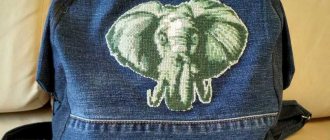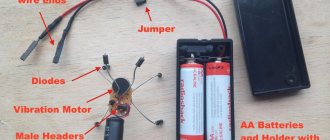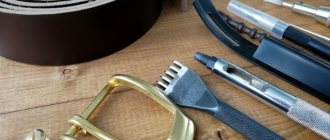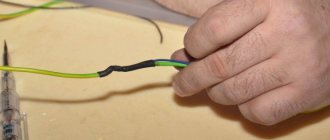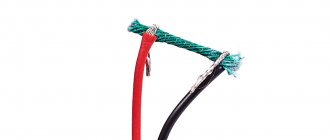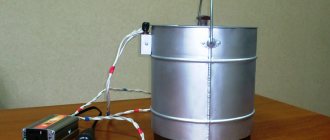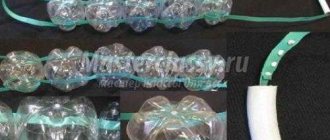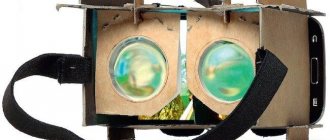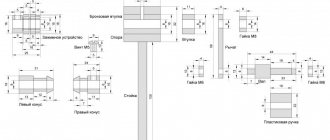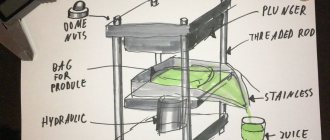Summary to date
Well, that's all. I drew three different frame options for myself and will continue to see what suits me best for my tasks. Naturally, I do not set out to solve anyone else’s issues. The fact is that I often meet people who do not have tasks that should be solved by one tool or another, and for this reason they criticize the choice of a person who needs this particular tool.
The structure will be made of aluminum with fastening made of molecularly cross-linked polyethylene fittings for pipelines. The frame is small in size, about 50 by 30 centimeters. The frame is flat with polyurethane foam inserts on the back side. I'll try to install a weight belt in this design. I will try to squeeze in a shelf even if I have to sew on a plastic plate. To secure the load, I will try to provide a Molle fastening and a stretchy mesh. All sewing work will have to be organized so that it can be done as much as possible by hand, or cheaply in an atelier.
While everything is at the project stage, I will wait for questions and feedback. Then I will post the version that I like best. No intermediate options.
• Go to archive
Maybe a cargo platform?
Naturally, at home it is difficult to make a frame from fiberglass or carbon fiber with a given rigidity and dimensions. Moreover, it will take a lot of time to calculate and try it all on. But such a frame can be made from duralumin tubes, fortunately the D16T alloy can be found in most hardware stores, but the question will arise of how to connect them. Although I have studied this issue and I think that the best option would be to connect using corners to make a polyethylene pipeline. These corners hold both cold and pressure, are resistant to ultraviolet radiation, and generally have very good internal diameters. Moreover, it is glued using epoxy resin.
The cargo frame has a couple of disadvantages. There is no shelf and it is below neck level.
The shelf is of high importance for my case, since we planned to use these frames to transport things that need a flat surface for support. But when using a loading platform, this event will be difficult
But I can somehow figure out a more optimal placement of the load above the neck using hangers and ties. Since one of the uses of this equipment is the transfer of seedlings, I would like to firmly fix them along the entire length, but making a frame about two meters high is not rational. Prefabricated structure is not desirable.
To the question of why you can’t just use a large expedition backpack, I’ll answer this way. I tried several different versions of backpacks, but the branches inside them broke, and it was impossible to pull it down to a flat rectangle using standard methods. As a result, we had to install corrugated boxes tied with tape inside the backpack and then had to tighten it from the outside with additional slings. When tightened, the backpack bag tends to be the size of a pipe, not a sheet. Also, the reason for which it is being developed is low cost and repeatability for volunteers. Most of them cannot afford to buy an expedition backpack, and there are no sponsors who will just buy 30 backpacks. It’s hard to find people here for this kind of work.
Step-by-step cutting and sewing of a hiking backpack
Below is the construction of a 90 liter backpack.
Initially, the details are drawn on paper, cut out and cut out of the material. To make it more convenient to cut the paper pattern, pin it to the fabric and trace it with chalk, adding allowances.
For sewing you will need the following parts:
- the back and bottom of the product are made one-piece, the height of the part is 101, of which the back is 75x30, the bottom is 30x26x33;
- the main part is in the shape of a trapezoid with dimensions 80x75x85.
- one pocket measuring 25x25, and two - 25x15;
Reference! The number of pockets depends on the desire of the owner, but 3 pieces are sewn on as standard.
- the straps are drawn curved with a length of 65 and a width of 8 and are cut from all three materials;
- valve 30x25 with folds, cut out of thin nylon and stitched at the corners;
- the back cover is 50 high and 20 wide at the top and 25 at the bottom, cut from nylon and isolon;
- the belt is cut out, as well as the straps, from all materials with a length of 70;
- tube 110x75, cut out of thin nylon.
Important! All dimensions are indicated in centimeters and do not take into account seam allowances; usually add 0.7 - 1 cm.
After all the details have been cut out and the necessary accessories have been prepared, we begin sewing.
According to the marks, pockets with sewn-in zippers are attached to the “body” of the backpack. Two slings 2.5 cm wide are sewn vertically between them and horizontally above and below the pockets.
From the upper corners downwards, two slings 25 mm wide are attached to the back and the top is left open so that the frame can be inserted there later. Tightening buckles are attached to the sides at a distance of 30 and 55 cm from the bottom on both sides and two to the upper corners. And two slings on top and bottom. Retreat 25 cm from the top and grind the handle in the center. The straps are adjusted under it, having previously assembled them from the main fabric, thin nylon and isolon between them. Adjust the overlay by covering the ends of the straps, leaving the sides open for the belt along the bottom.
using the principle of shoulder straps
. Only additionally a wide sling with fastex is sewn on top.
Two 2.5 cm slings, 45 cm long, are sewn to the edges, and tightening buckles are sewn to connect to the backpack. The valve is assembled so that it looks like a box; narrow tightening buckles are sewn into the seams at the corners, with which it will be attached to the base. Sew in the zipper by making a slit in the center.
Connect the back and base of the backpack to each other , folding them face to face. The main seams are reinforced with braid.
The tube is ground down and a drawstring 2 cm wide is made on top. A rope is inserted into it and the ends are threaded into the stop clamp. They grind it to the backpack and insert aluminum tubes into the tunnels made earlier.
Having collected all the parts together, you should carefully examine the product and, if something is missing, add it.
Reference! When making your first backpack, you should try your hand at mock-up cheap fabric.
Which backpack is better, easel or anatomical?
Disputes over the advantages and disadvantages of this or that model have not subsided for many years. Proponents make compelling arguments for their choice, but there is no definitive answer. A powerful advertising campaign for high-tech anatomical products, from the point of view of fans of easel backpacks, is shattered when they propose to stuff a model with a soft back with things, food, canned goods, and then put it on. The difference is significant. Owners of an anatomical backpack will have a hard time, as hard objects will put a lot of pressure on their back.
In turn, fans of anatomical designs quite reasonably prove the validity of their choice by the fact that the product is more ergonomic than an easel backpack. The backpack itself is lighter, and traveling with it is more comfortable. In fact, it is better to use each type when it is most appropriate. It is no coincidence that many experienced tourists have several models that they choose depending on the situation.
It should be recognized that technological progress and the capabilities of modern industry have led to the fact that the latest generation of anatomical backpacks is in great demand. There is a logical explanation for this. They are more comfortable to use. When storing them at home, they are easier to put on a shelf, since there is no rigid frame. An easel backpack can only be placed or placed on a very large shelf. True, you will have to pay a little more for such convenience.
A special category of backpacks with improved characteristics is necessary for mountaineers and rock climbers. Often the product is made to order, or modified from a purchased model with your own hands. Moreover, stiffening ribs can be inserted into an anatomical backpack, and, on the contrary, some elements can be removed from an easel one. Thus, a kind of hybrid is obtained that has characteristics of both species. Perhaps the industry will begin to produce products that will not be similar to classic designs and will acquire new useful properties. At least, anatomical backpacks are increasingly equipped with rigid inserts, which makes them similar to their easel counterparts.
Backpack pattern
Sewing patterns are usually used by beginning craftsmen. But it won’t hurt professionals either. Using a pattern, you can sew a backpack of any complexity - the main thing is to pay attention to every detail. You can also make backpack patterns with your own hands.
The following tools are required for pattern drawing:
- paper
- pencil
- ruler and square
- centimeter.
You can make a pattern designed for rounding corners with your own hands. To do this, you will need to draw a circle on cardboard, the radius of which is 18 - 20 cm. Then cut out one third from the resulting circle.
Note!
Ideas for LD (a girl’s personal diary): step-by-step instructions for making it yourself, photo reviews of the best options
Educational soft books made of felt: materials for making, detailed instructions + reviews of plots for books (100 photos)
Original do-it-yourself valentines - design options, necessary materials, master class for DIY work
For a regular pattern, two measurements will be enough: shoulder width and back length (measured from the lower back).
- Draw a rectangle on a piece of paper. Its width should be less than shoulder width.
- Then a vertical line is drawn through the center of the rectangle. Afterwards, the sheet of paper should be bent along its axis. Now you can draw the contours of the required shape of the future backpack.
- The pattern is cut along the drawn contours.
Comments
This site uses cookies to make it easier for you to navigate the site, offer only information that interests you, and make it easier to fill out forms. I assume that if you continue to use my site, you agree to my use of cookies. You can delete and/or prohibit their use at any time by changing the settings of your Internet browser.
Please notify me of any bugs you find at: [email protected]
.
All wishes and advice will be taken into account in the further design of the site. I am ready to cooperate with everyone. In some cases, the author's opinion may not coincide with the author's opinion! Phone:
+7-902-924-70-49.
Angles
One of the controversial and often discussed details is the protruding corners from the frame. Hunters want them so that they can hang a gun on them, and survivalists believe that this will make it more convenient to hang various things with grommets and eyes.
The protruding corners at the bottom make it easier to adjust the frame when walking and serve as some kind of legs on which this structure can stand without getting dirty.
For my purposes, these protruding parts are not critical, either on the positive or negative side. Perhaps in the future they will be needed to expand the functionality of the design. This solution increases the cost of the design by only one hundred rubles.
Anatomical backpacks with an external frame (hybrid frame).
This is like the next model of easel backpacks. Remember, they did not care at all about the back of the unfortunate owner, who was forced to feel all the details of the metal frame? So, anatomical backpacks with an external frame solve this problem.
The frame in such backpacks is placed outside and covered with mesh. When putting on the backpack, the mesh takes 100% of the shape of the back
, which is more convenient than with an internal frame.
But there are a couple of nuances. Firstly, the back is not adjustable
: the straps are usually sewn to the backpack itself.
That is, when purchasing, you need to decide exactly whether this particular model is right for you or not. The second nuance is the shape of the internal space of the backpack. Due to the fact that such anatomical backpacks are flattened on the side of the frame
, their internal volume is sharply limited, and it can be almost impossible to stuff particularly bulky things like sleeping bags into them. You have to tie it outside.
Criterias of choice
When purchasing a product, you should pay attention to several important points:
Machine material. Carbon fiber is considered the most reliable. In terms of characteristics, it is superior to its aluminum counterpart and is more resistant to impact loads, more resistant to fracture, and lighter. It is recommended to purchase high-quality tourist easel backpacks in specialized stores. It is better to avoid products of dubious manufacture. You are buying a backpack for many years, so there is no point in saving on it. All straps and belts must be equipped with adjustment mechanisms, have sufficient strength, but at the same time be soft. The most important parts are metal, but to facilitate the design, some of the fittings are made of high-strength plastic. Shoulder straps must be anatomically shaped
They are curved outward, made of several layers: strength, decorative, softening. It is important that there are a sufficient number of internal and external pockets. When choosing the latter, it is advisable to pay attention to the presence of a through hole. The weight and size of the product must be selected taking into account your own height and anatomical features. A very important criterion is the capacity of the easel backpack.
Preference should be given to products from reputable manufacturers. The control system there is extremely strict - from the careful selection of fabric to the set of accessories and belts. An experienced tourist can determine the quality of a product by touch or appearance, so when purchasing it is better to take such a specialist with you. This will help you avoid unnecessary expenses and choose a product that meets the basic criteria the first time.
Necessary materials
Fabrics
It is important that the hiking backpack is durable and waterproof. Therefore, the choice of fabric is approached with special attention. The following materials are suitable for its manufacture:
- avisent - was developed for the army and has the appropriate characteristics: durable, lightweight, inexpensive, withstands low temperatures, allows water to pass through, frays when cut;
- cordura - also invented for the army: available in different densities, water-repellent, does not crumble, expensive, heavy, does not tolerate low temperatures;
- oxford - a fabric with a matting weave and nylon content: light, inexpensive, heat-resistant (does not lose properties from -50 to +110 degrees C), waterproof, fades when exposed to direct sunlight;
- polyester - for greater strength and moisture resistance, it is treated with polyvinyl chloride: cheap, lightweight, does not change properties in frost and sun, does not deform, does not crumble, does not withstand heavy loads, does not protect from moisture.
Advice! When choosing a material, you should take into account the planned loads and conditions of use.
Accessories and additional materials
For practicality, you will additionally need:
- thin nylon (with a width of 150 cm) - 70 cm;
- Isolon (foam) 10 mm thick - 1 sq. m.;
- sling 25 mm - 7 m;
- sling 45 mm - 2 m;
- fastex 25 mm - 2 pcs.;
- fastex 45 mm - 1 pc.;
- tightening buckle - 14 pcs.;
- stop clamp - 1 pc.;
- zipper 30 cm - 1 pc.;
- zippers 20 cm - according to the number of pockets;
- aluminum tubes for frame D4, length 70 cm - 2 pcs.;
- cord D3 - 1.3 m;13. tape for finishing seams - 2 m.
Features and advantages of the design
The backpack got its name due to the presence of a metal structure that performs the functions of a frame and is called a machine. Traditionally it is made from light aluminum alloys
It was important for manufacturers to reduce the weight of the product as much as possible, giving it the necessary rigidity. Today the machine is made not only from aluminum
The best performance characteristics are characteristic of devices made of fiberglass and especially carbon fiber. The configuration of the backpack has also undergone significant changes. A rigid frame gives the traveler the following advantages:
- uniform load on the shoulders and spine, the ability to walk with a straight back;
- the presence of a large number of independent compartments for storing things with easy access to them;
- possibility of individual adjustment;
- ergonomic shock absorbers that ensure proper fit to the body and the necessary ventilation;
- free placement of internal contents, which will not interfere with the hike or put pressure on you;
- affordable price;
- reliability and durability.
Admirers of this model can be found on any tourist route: in the forest, in the mountains. They are in no hurry to change their comfortable and ergonomic easel backpack, giving preference to more fashionable trends. There are reasons for this. No other backpack model has such a rigid design. At a halt, it can be placed in a stable vertical position, which is sometimes necessary.
The disadvantages of the design include excessive rigidity of the product. Falling with a backpack is extremely unpleasant and often painful. For high-altitude travel, it is better to purchase other models of special design. They are significantly more expensive, and if the desire for snowy peaks is irresistible and hiking is frequent, then it makes sense to spend money on such products. For a regular tourist route, a good frame option is perfect. Due to the design features, items in a tourist easel backpack do not need to be packed using a special method. Even randomly placed hard objects will not put pressure on your back, causing discomfort when walking.
Areas of use
Expedition backpacks
This is the common name for backpacks with a volume of over 80 liters, designed for long trips and the toughest use. Almost everything that has been said about the design of the backpack is embodied in expedition models. This is also the most popular, diverse and widely represented group of backpacks. A variety of designs, designs, a wide range of volumes, various materials allow even the most sophisticated users to choose a model for themselves.
Expedition backpack
The main qualities of such backpacks:
- practicality,
- versatility,
- convenience for most users.
Therefore, if you do not have clear, highly specialized tasks, if you want an “all in one” backpack for all occasions, then this format is just right. Of course, it will lose to highly specialized models in each segment - for dizzying ski slopes or serious climbs, but if there is no desire/opportunity to buy several different models, then a universal medium-sized backpack (50-70L for women, 60-80L for men) will be the best choice . For long-term autonomous expeditions or water rafting with approaches over land, when you need to carry a lot of heavy loads, you will need larger backpacks - 80-100 liters or even more.
Ski and assault backpacks
Comparable in volume (20-50 liters), but different in application from backpacks for weekend hikes. These are extremely durable, often high-tech products with a minimum number of external pockets and protruding parts, and have a “streamlined” shape. Such a backpack has a minimum chance of getting caught on a ledge of a rock or branch at the most inopportune moment, and if this happens (for example, when pulled on a rope), then thanks to its durable materials and shape, it has many chances to withstand such a test. The main purpose of such backpacks is to participate in climbing and short hikes in the most extreme conditions with many mechanical influences, heavy loads and adverse weather conditions. Such products should be as comfortable, lightweight and “indestructible” as possible. As a rule, the design of this type of backpack implies the ability to place outside, if necessary, individual elements of assault equipment - for example, rope, ice tools, crampons.
Ski backpack
In a number of ways, very similar to this group of backpacks are backpacks for freeride and backcountry - popular skiing disciplines among extreme sports enthusiasts, which involve, in addition to climbing a mountain, also descending on skis or a snowboard. Although they have a similar volume, they differ in their characteristic design elements. First of all, this is the ability to conveniently secure skis/snowboards for carrying, and secondly, the presence of special pockets:
- soft pocket for ski mask;
- special compartment for an avalanche probe and a snow shovel;
- compartment for avalanche beeper;
- first aid kit compartment;
Thirdly, the use mainly in the cold season usually forces designers to protect the outlet hose of the drinking system with an insulating (usually neoprene) zippered cover.
Often freeride backpacks have special back protection that has a separate certificate. Some models are also equipped with an innovative “avalanche ascent” system - this is a kind of airbag for the rider, powered by a squib and giving a real chance of surviving and even getting out independently if caught in an avalanche. Please note that most ammo for these systems is currently prohibited from being carried on airplanes. Not surprisingly, these packs are among the most expensive in terms of volume/price ratio available. Quite often, freeride packs are used on climbs, and vice versa.
Urban backpacks
The volume of a city backpack ranges from 10 to 30 liters. As for the design and appearance, there is plenty for designers to roam around here! The dimensions of a city backpack are primarily determined by the dimensions of a standard A4 typewritten sheet.
Urban backpack
The documents in the folder are supposed to fit into the backpack without getting wrinkled. If a stack of paper fits, then most likely a laptop, a couple of sandwiches, a bottle of mineral water, a sports uniform for an evening workout, and a book to read on the subway on the way home will also fit. Nothing else is required from such a backpack.
Within this broad category there are several subcategories:
School and student backpacks
School and student backpacks are designed for educational supplies. There are also original office backpacks that are designed for work trips and conveniently accommodate a laptop, tablet, a bunch of chargers, documents, brakes and other important things that are so important to have with you in the office or at work.
Sports backpacks
These are small copies of their older “brothers” - large tourist backpacks. they may contain a pocket for a drinking system, special ties, and have a removable valve, but the main difference that sets small-volume sports backpacks apart is the variety of colors. With such a backpack it is convenient not only to carry a change of clothes, shoes and equipment, but also to stand out brightly against the background of a gray city.
Bicycle backpacks
Tricky lightweight bicycle backpacks with a volume of about 15 liters. Designed to accommodate a hydration system, a set of tools and spare parts for a bicycle, and a small amount of additional equipment, food and other things. Do not confuse bicycle backpacks with special trunks (so-called cycling pants). Such backpacks most often have a special back design: a special frame mesh that “moves” the backpack away from the back, thereby providing better ventilation while moving. In addition, such a mesh follows the contour of the curve of the cyclist's back during movement, which significantly reduces the load on the muscles.
Children's backpacks
Sooner or later, brutal dads and graceful moms get tired of carrying around a comical, bright-colored handbag with a funny teddy bear. Let everyone carry their own clothes! Children's backpacks are very different, depending on age, from bright and cute ones designed for a pair of diapers, a banana and a bottle, up to serious functional models for older children. Moreover, for children of different ages there are even real hiking backpacks in which children, like everyone else, will be able to carry food and equipment. Separately, it is worth highlighting baby carriers. If you have a little happiness, this is not a reason to give up your favorite hobby. Take the pioneer with you, he will benefit from the mountain air. There is a special range of backpacks in which the little one can sit comfortably and do his business while you sweat on a difficult climb.
Special backpacks
These include backpacks for competitions, backpacks for skis or snowboards, and other specialized backpacks that cannot be classified into any ordinary category.
As a result, when choosing the type of backpack and its design, you must take into account its scope of application. If you love a variety of hikes, you'll likely have your own collection of backpacks. You shouldn’t chase after just one backpack - in some places it will save you, but in others it can harm its owner.
